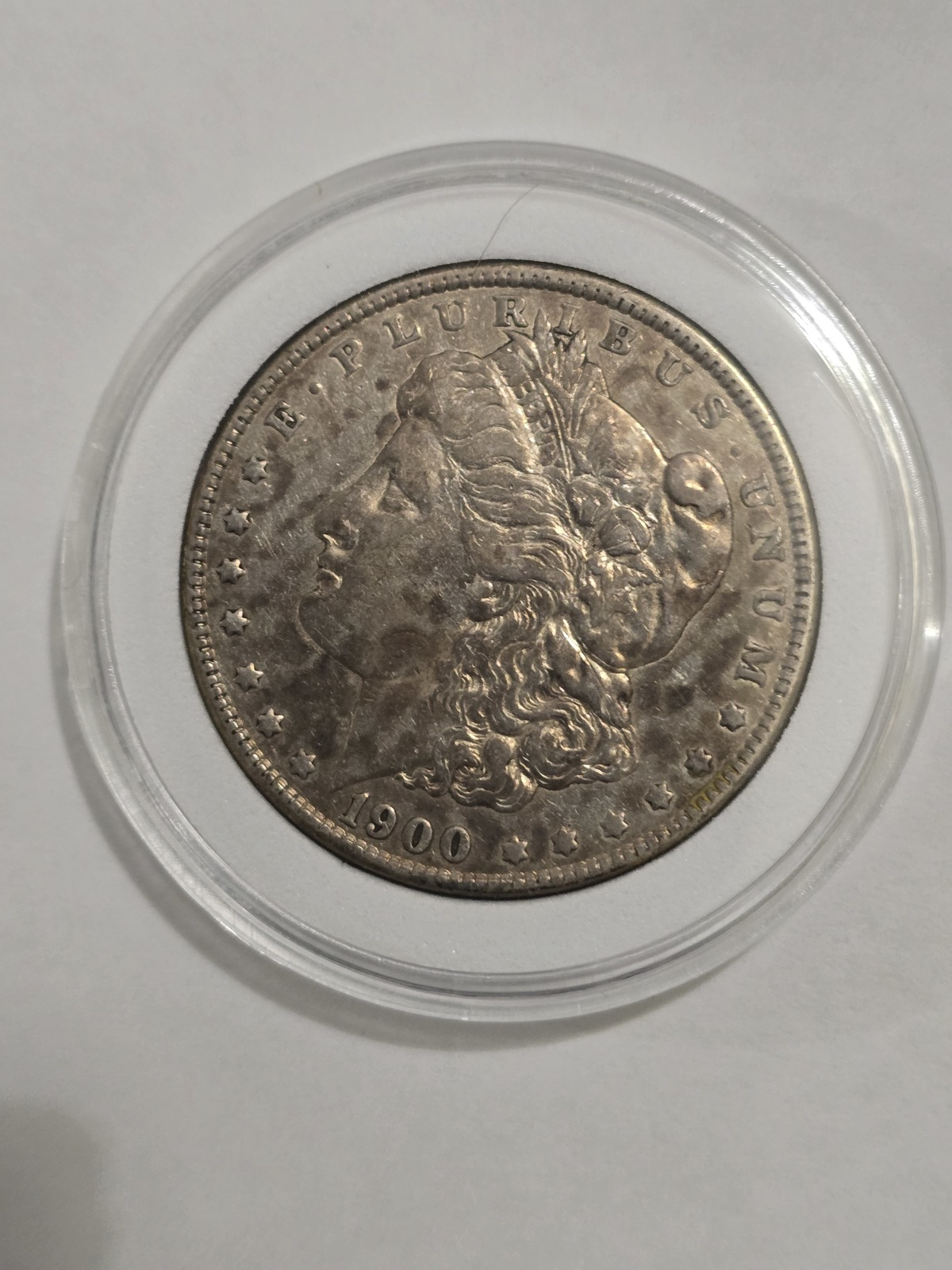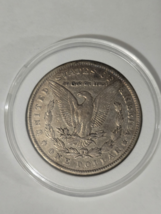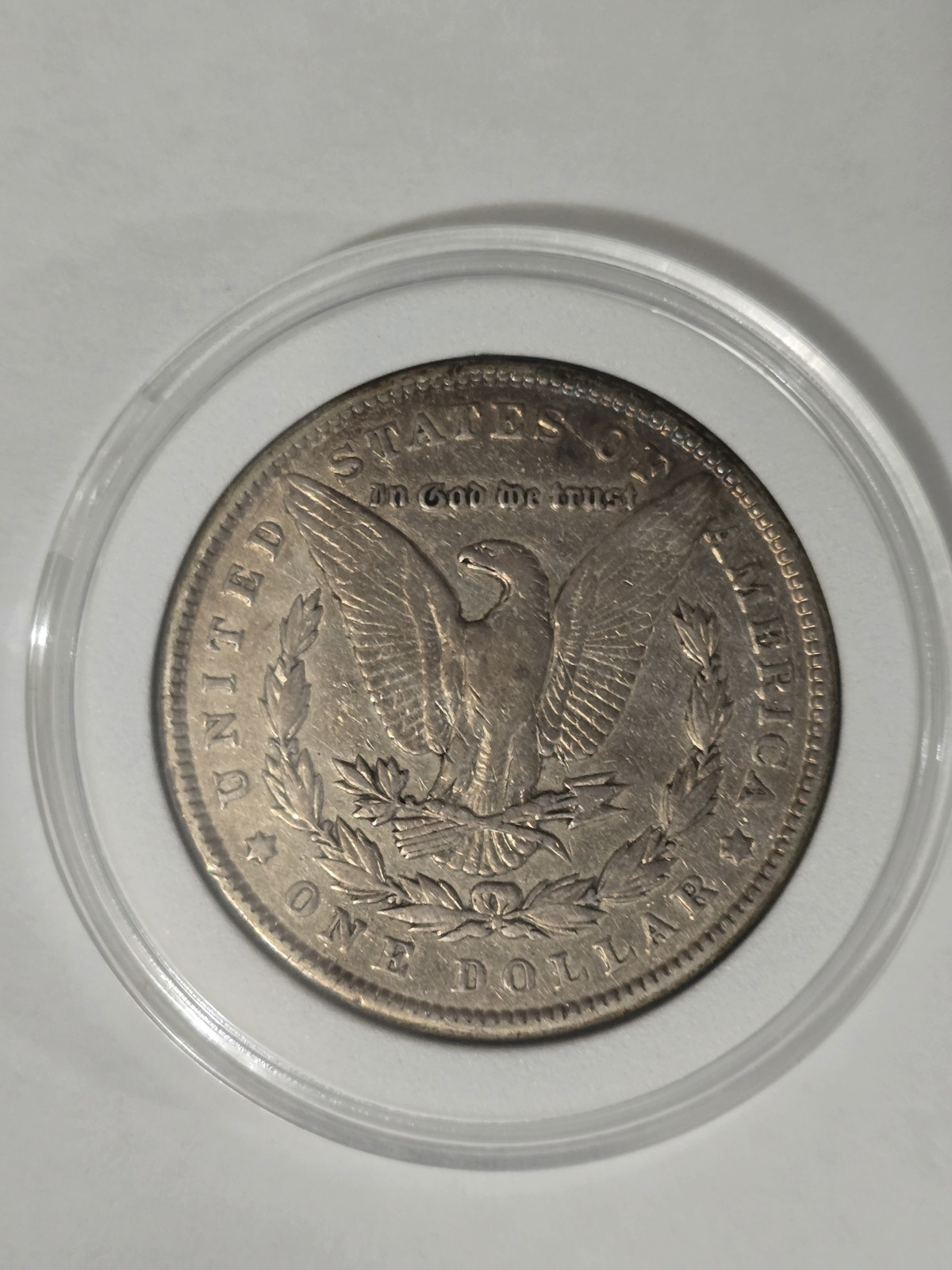Rendered at 07:32:28 04/14/25
11 recent views
Coin 1900 Morgan Silver Dollar AU or better condition
£48.89 GBP
Ships from
United States

Shipping options
Offer policy
OBO - Seller accepts offers on this item.
Details
Return policy
None: All purchases final
Purchase protection
Payment options
PayPal accepted
PayPal Credit accepted
Venmo accepted
PayPal, MasterCard, Visa, Discover, and American Express accepted
Maestro accepted
Amazon Pay accepted
Nuvei accepted
Shipping options
Offer policy
OBO - Seller accepts offers on this item.
Details
Return policy
None: All purchases final
Purchase protection
Payment options
PayPal accepted
PayPal Credit accepted
Venmo accepted
PayPal, MasterCard, Visa, Discover, and American Express accepted
Maestro accepted
Amazon Pay accepted
Nuvei accepted
Item traits
| Category: | |
|---|---|
| Quantity Available: |
Only one in stock, order soon |
| Condition: |
Uncirculated |
| Material: |
Silver |
| Grade: |
AU 58 |
| Composition: |
Silver |
| Year: |
1900 |
| Circulated/Uncirculated: |
Uncirculated |
| Mint Location: |
Philadelphia |
| Country/Region of Manufacture: |
United States |
| Coin: |
Morgan |
| Denomination: |
$1 |
Listing details
| Seller policies: | |
|---|---|
| Shipping discount: |
Shipping weights of all items added together for savings. |
| Price discount: |
1% off w/ $1,000.00 spent |
| Posted for sale: |
More than a week ago |
| Item number: |
1610811044 |
Item description
1900 US Morgan Silver Dollar about uncirculated condition. This coin is in excellent condition.
Before the American Revolutionary War, coins from many European nations circulated freely in the American colonies, as did coinage issued by the various colonies. Chief among these were the Spanish silver dollar coins (also called pieces of eight or eight reales) minted in Mexico and other colonies with silver mined from North, Central and South American mines. These coins, along with others of similar size and value, were in use throughout the colonies, and later the United States, and were legal tender until 1857.
In 1776, several thousand pewter Continental Currency coins were minted. Although unconfirmed, many numismatists believe these to have been pattern coins of a proposed silver dollar coin authorized by the Continental Congress to prop up the rapidly failing Continental Currency—the first attempt by the fledgling U.S. at paper currency.[10] Several examples were also struck in brass and silver, but a circulating coin was not produced, in large part because of the financial difficulties of running the Revolutionary War. The Continental Currency dollar coin bears the date 1776, and while its true denomination is not known, it is generally the size of later dollars, and the name has stuck. The failure of the Continental Currency exacerbated a distrust of paper money among both politicians and the population at large. The letters of Thomas Jefferson indicate that he wished the United States to eschew paper money and instead mint coins of similar perceived value and worth to those foreign coins circulating at the time.[11]
The Coinage Act of 1792 authorized the production of dollar coins from silver. The United States Mint produced silver dollar coins from 1794 to 1803, then ceased regular production of silver dollars until 1836. The first silver dollars, precisely 1,758 of them, were coined on October 15, 1794, and were immediately delivered to Mint Director David Rittenhouse for distribution to dignitaries as souvenirs.[12] Thereafter, until 1804, they were struck in varying quantities. There are two obverse designs: Flowing Hair (1794–1795) and Draped Bust (1795–1804). There are also two reverse designs used for the Draped Bust variety: small eagle (1795–1798) and heraldic eagle (1798–1804). Original silver dollars from this period are highly prized by coin collectors and are exceptionally valuable, and range from fairly common to incredibly rare. Because of the early practice of hand engraving each die, there are dozens of varieties known for all dates between 1795 and 1803.
It is also one of only two denominations (the other being the cent) minted every year from its inception during the first decade of mint operation. Though a new Spanish dollar or 8-real minted after 1772 theoretically contained 417.7 grains of silver of fineness 130/144 (or 377.1 grains fine silver), reliable assays of the period confirmed a fine silver content of 370.95 grains (24.037 g) for the average Spanish dollar in circulation. [13] The new US silver dollar of 371.25 grains (24.057 g) therefore compared favorably and was received at par with the Spanish dollar for foreign payments, and in 1803 President Thomas Jefferson halted new silver dollars made out of the US Mint's limited resources since it failed to stay in domestic circulation. The less-exportable half dollar therefore became the largest US-made silver coin in domestic use for the next several decades. It was only after Mexican independence in 1821 when their peso's fine silver content of 377.1 grains was firmly upheld, which the US later had to compete with using a heavier Trade dollar coin of 378.0 grains (24.49 g) fine silver.
Added to your wish list!

- Coin 1900 Morgan Silver Dollar AU or better condition
- 1 in stock
- Price negotiable
Get an item reminder
We'll email you a link to your item now and follow up with a single reminder (if you'd like one). That's it! No spam, no hassle.
Already have an account?
Log in and add this item to your wish list.






